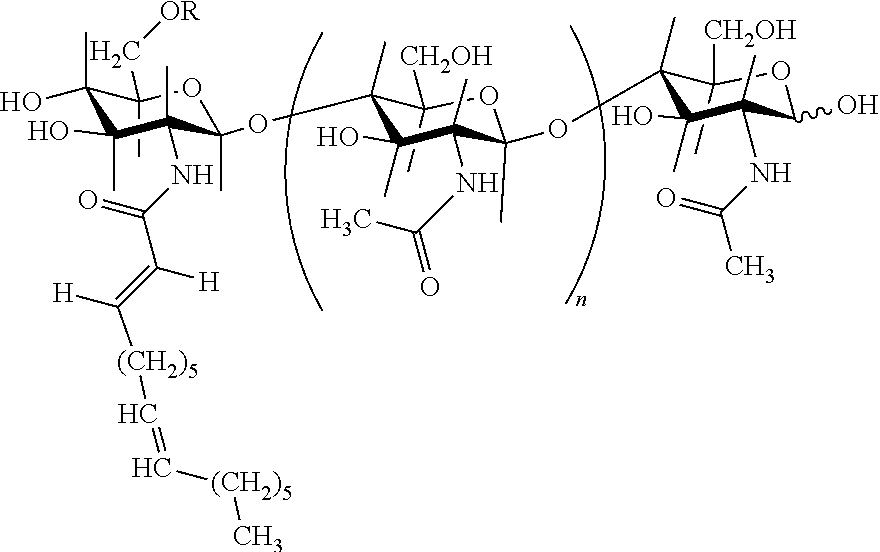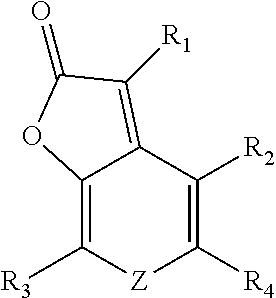Compositions and methods for treating pests
a technology for pests and compositions, applied in the field of insect control compositions, can solve the problems of clogging of spraying equipment, poor and inefficient dispersion of actives, and inability to disperse well when diluted with water, and achieve the effect of reducing the overall phytotoxicity of a particular formulation
- Summary
- Abstract
- Description
- Claims
- Application Information
AI Technical Summary
Benefits of technology
Problems solved by technology
Method used
Image
Examples
example 1
Biopesticide Formulations
[0333]Materials & Methods:
Paraffinic Oil:
[0334]SunSpray® 6N
[0335]Cab-O-Sil® M-5
[0336]Cab-O-Sil® TS-720
Polyoxyethylene (40) Sorbitol Hexaoleate:
[0337]Cirrasol® G-1086
Sorbitan Monostearate:
[0338]Span® 60
Sorbitan Monooleate:
[0339]Span® 80
Modified Styrene Acrylic Polymer:
[0340]Metasperse® 550S
Fungal Pesticide (Spores):
[0341]Spores of Metarhizium anisopliae (also referred to as Metarhizium brunneum)
Biopesticide Compositions:
[0342]The following biopesticides (i.e., compositions) were prepared as follows. Sunspray 6N oil was combined with Cab-O-Sil M-5 and blended for 3 minutes on high-speed using a Waring Commercial Laboratory Blender. The resulting liquid was divided by pouring 100 mL into separate Ball mason jar carafes. The remaining components were promptly added and blended for 2 minutes. Each was poured into 250 bottles. Technical grade MET52 spore powder was added to each sample, and each sample was shaken on a Burrerell Wrist-Action Shaker for...
example 2
Span™ 60 Addition and Phytotoxicity
[0344]Formulations with and without Span™ 60 were prepared as described below and then tested for phytotoxiciity. The objective was to determine whether phytoxicity could be minimized while retaining the emulsion properties of the formulation, and minimizing deposition of residues of oil and spores on plastic surfaces.
[0345]The formulations given below in Table 3 were prepared as follows: SunSpray® 6N oil was combined with Cab-O-Sil® M-5 and blended for 3 minutes on high-speed using a Waring Commercial Laboratory Blender. The resulting liquid was divided by pouring 100 mL into separate Ball mason jar carafes. The remaining components were promptly added and blended for 2 minutes. Each was poured into 250 bottles. Technical grade MET52 spore powder was added to each sample, and each sample was shaken on a Burrerell Wrist-Action Shaker for 10 minutes. Finally, each sample was divided into two 50 mL LDPE plastic bottles in preparation for phytotoxicit...
example 3
Variation of Span™ 60 Concentrations
[0349]Formulations with increasing concentrations of Span™ 60, as described in Table 4, were prepared as described in Example 2.
[0350]Phytotoxicity testing on cucumber was conducted and data were analyzed as described in Example 2 with the exception that final injury ratings were made at 8 days after initial application rather than 7. The data in Table 4 is a subset of data from a trial that included 29 treatments.
TABLE 4Comparison of phytotoxicity to cucumber among different formulations.Cab-CucumberCucumberO-Atloxat 0.8%at 1.6%ExperimentalSunspraySilCirrasolSpan% of NIS asMetasperseformulationformulationFormulation6N OilM-5G-108660Span550S(w / w)(w / w)Control000000 0 i 0 iE without78110000 3.2 b-e 3.4 bcdE1 with 5%**7819.50.550 3.9 d-h 5.9 aE2 with 10%78191100 2.35 c-g 2.6 b-fE3 with 15%7818.51.5150 2 e-i 2.6 b-fDifference+0.4+2.5*for E1Difference−0.85−0.8for E2Difference−1.2−0.8for E3F without73110005 2.4 c-g 2.7 b-fF1 with 5%7319.50.555 2.4 d-h 2...
PUM
 Login to View More
Login to View More Abstract
Description
Claims
Application Information
 Login to View More
Login to View More - R&D
- Intellectual Property
- Life Sciences
- Materials
- Tech Scout
- Unparalleled Data Quality
- Higher Quality Content
- 60% Fewer Hallucinations
Browse by: Latest US Patents, China's latest patents, Technical Efficacy Thesaurus, Application Domain, Technology Topic, Popular Technical Reports.
© 2025 PatSnap. All rights reserved.Legal|Privacy policy|Modern Slavery Act Transparency Statement|Sitemap|About US| Contact US: help@patsnap.com



